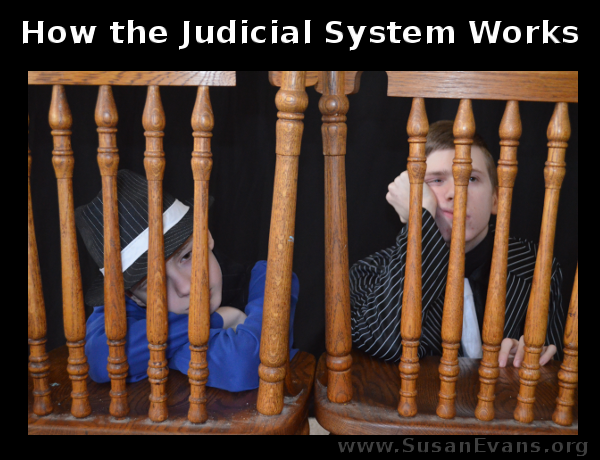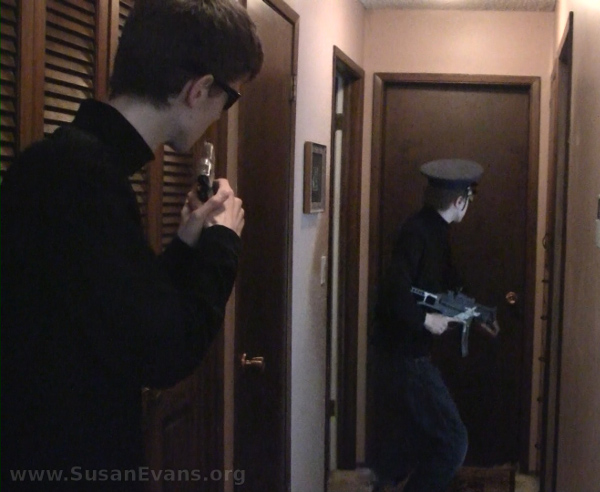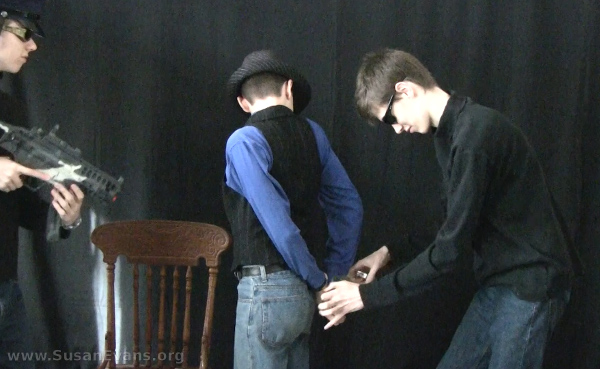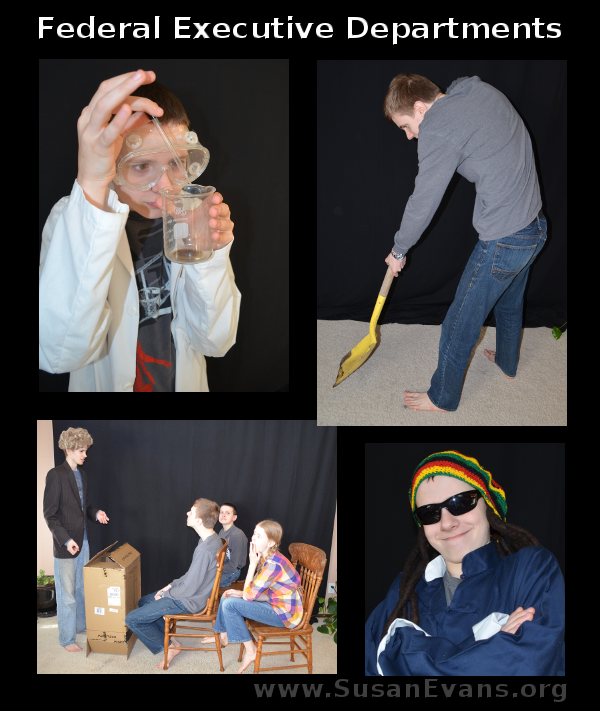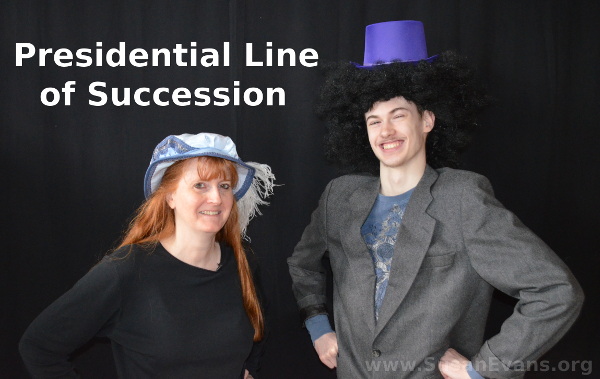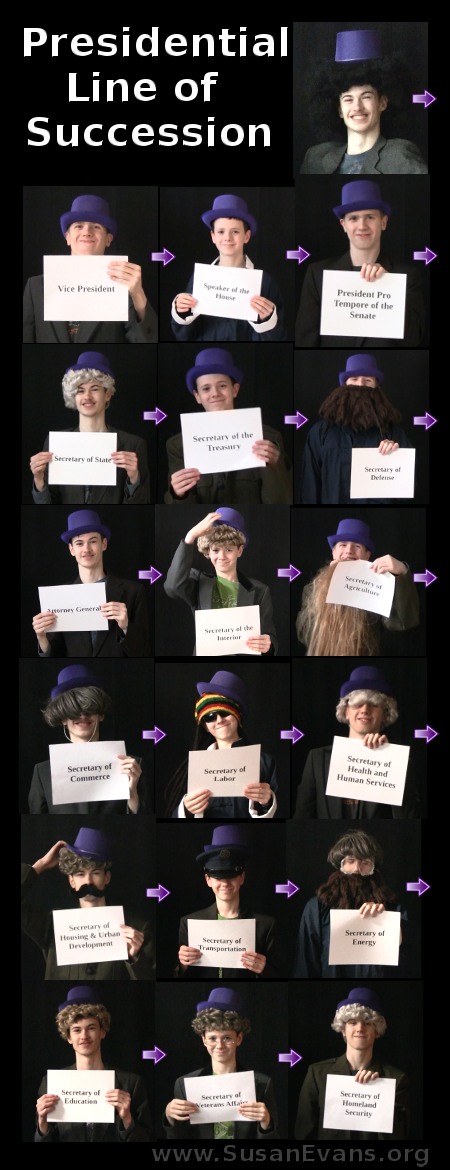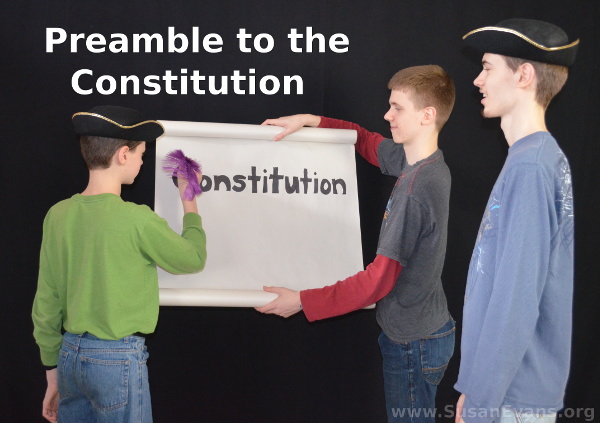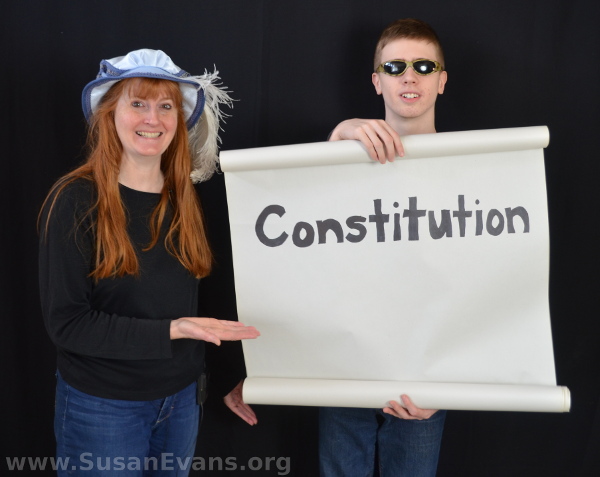The Notgrass Company has decided to expand this government series by sponsoring these blog posts! You guys, as homeschoolers, you have to teach government to your high schoolers anyway, and the Exploring Government book is clear in its explanations, full of modern color pictures, and interesting in its examples (as you’ll see in the mafia counterfeiting illustration below). It makes the study of government actually enjoyable. It’s perfect for Christian homeschoolers. Go buy it already!
In the unit on “The Judiciary,” this Notgrass government book gave a fun example of a fictional counterfeiting ring that sounded like a mafia sting. I had one of my sons modify this story for the next video in our series. We even changed the names to remain incognito, to protect the identities of the original fictional characters. So now, ladies and gentlemen, we present “How the Judicial System Works.”
How the Judicial System Works (dramatization)
A Chicago gangster is counterfeiting money in his basement. Two federal agents break into his house and tell him he in under arrest. They tell him he has the right to remain silent, that anything he says can and would be used against him, that he has the right to have an attorney present at any interrogation. If he can’t afford a lawyer, one will be provided for him.
The gangster (we will call him Bob McBob) is taken to the county jail, then to a federal magistrate two days later, along with his gang’s leader (Fred Fredrickson), who was also arrested. They both plead not guilty to the charge of counterfeiting.
The magistrate set the bond the men had to pay in order to be released from jail until the trial. This money is a promise that they would not run away before the trial. If they did, the state could take their assets. The magistrate set the bond at $500,000 each, which they couldn’t possibly pay. So they had to stay in jail until the trial.
The prosecutor offered McBob a plea bargain. If he would plead guilty, the government would ask for a lesser sentence in exchange for his testimony against Fredrickson.
The federal district judge held pre-trial hearings where he heard defense motions regarding the trial. The defense attorneys asked for a change of venue for the trial to try and get an impartial jury. They also questioned the specificity of the search warrants and asked that the evidence the agents gathered be suppressed.
But the judge refused all of these and set a date for the trial.
Before the trial the two sides exchanged witness lists, the prosecuting attorney gathered evidence, and McBob’s defense attorney met with him and discussed the plea bargain. McBob ended up agreeing to the plea bargain.
When the time came, McBob and Fredrickson appeared before the federal district court on charges of counterfeiting. The judge heard the opening statements and the prosecuting attorney called in witnesses. After hearing the witnesses’ and McBob’s testimonies, the jury pronounced them both guilty. The judge sentenced McBob to four years and Fredrickson to ten years in prison.
I hope you enjoyed our re-enactment of “How the Judicial System Works.” Stay tuned for the next episode: The Bill of Rights!
The links in this series of blog posts are not affiliate links. Please buy the book from their website to bless their family the most!
